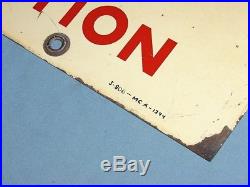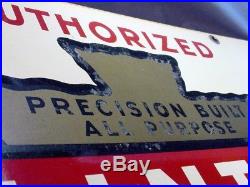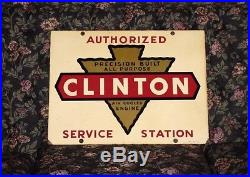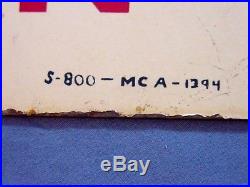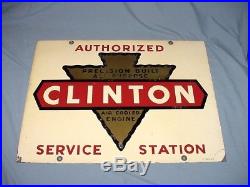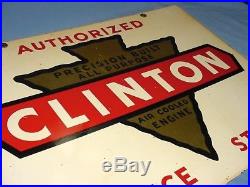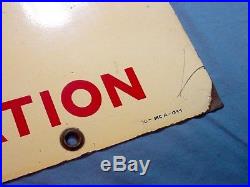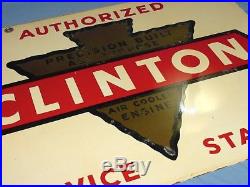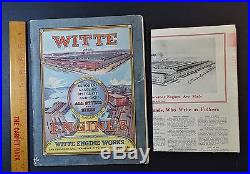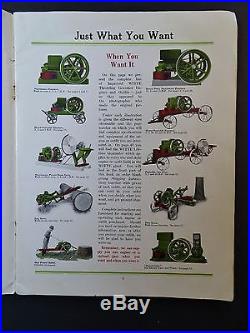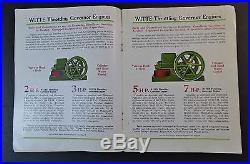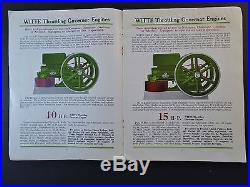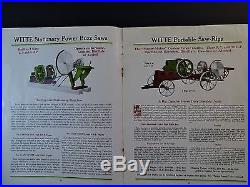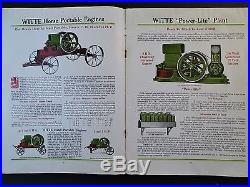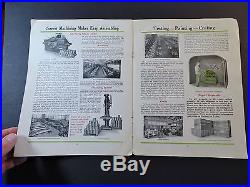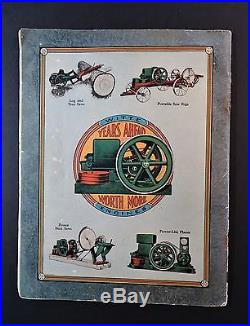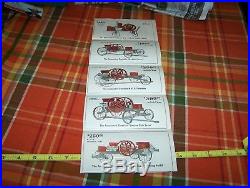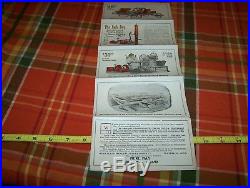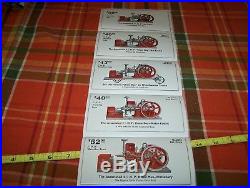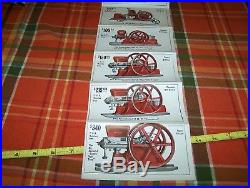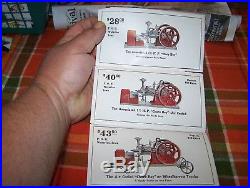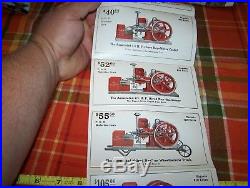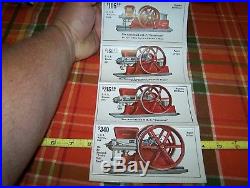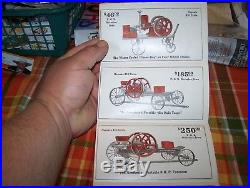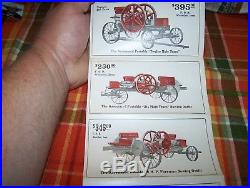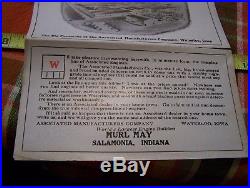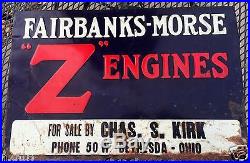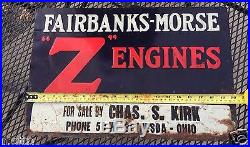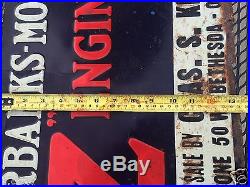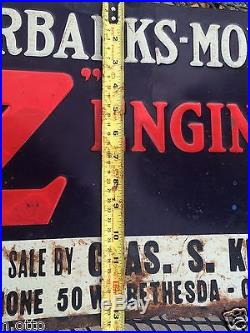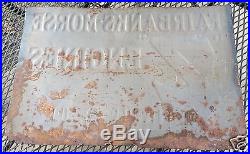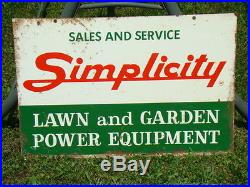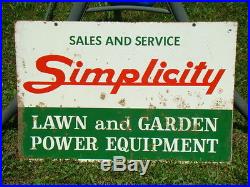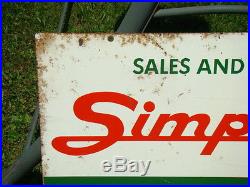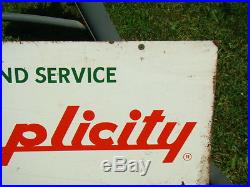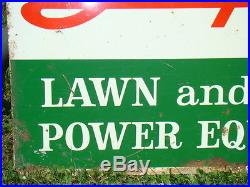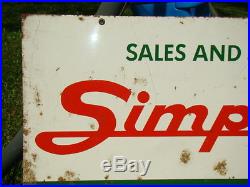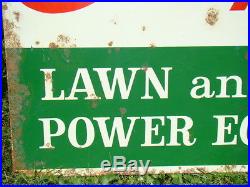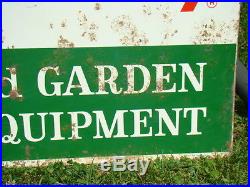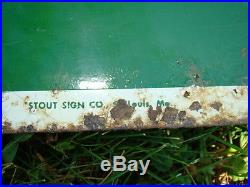RARE Advertising Trade Catalog – with Insert. Witte Engine Company ca 1910. For offer, a nice old trade catalog. Fresh from an estate in Upstate New York. Never offered on the market until now. Vintage, Old, antique, Original – NOT a Reproduction – Guaranteed!! Large insert, folds open like a poster. Witte Engine Works – San Francisco, CA, Kansas City, MO, Pittsburgh, PA. 40 pages, plus covers, and insert. Wear, small rip at cover edge, insert is ripped. Please see photos for details. If you collect Americana history, 20th century American advertisement ad, agriculture, farming, industry, engineering, invention, machine, gasoline / kerosene, alcohol, distillate, gas, etc. This is one you will not see again soon. A nice piece for your paper / ephemera collection. Perhaps some genealogy research information as well. A hit-and-miss engine is a type of four-stroke internal combustion engine that was conceived in the late 19th century and was produced by various companies from the 1890s through approximately the 1940s. The name comes from the method of speed control that is implemented on these engines (as opposed to the “throttle governed” method of speed control). The sound made when the engine is running without a load is a distinctive “POP whoosh whoosh whoosh whoosh POP” as the engine fires and then coasts until the speed decreases and it needs to fire again to maintain its average speed. Hit-and-miss engines were made by a multitude of engine manufacturers during their peak usage which was from approximately 1910 through the early 1930s when they began to be replaced by more modern designs. Some of the largest engine manufacturers were Stover, Hercules, International Harvester (McCormick Deering), John Deere and Fairbanks Morse. Construction This is a video montage of the Otto engines running at the Western Minnesota Steam Threshers Reunion (WMSTR), in Rollag, Minnesota. It is a type of hit-and-miss engine. (2min 16sec, 320×240, 340kbit/s video) A hit-and-miss engine is a type of flywheel engine. [1] A flywheel engine is an engine that has a large flywheel or set of flywheels connected to the crankshaft. The flywheels maintain engine speed during engine cycles that do not produce driving mechanical forces. The flywheels store energy on the combustion stroke and supply the stored energy to the mechanical load on the other three strokes of the piston. When these engines were designed technology was not nearly as advanced as today and all parts were made very large. A typical 6 horsepower (4.5 kW) engine weighs approximately 1000 pounds (454 kg). Typically, the engine material was mainly cast iron and all significant engine parts cast from it. Small functional pieces are made of steel and machined to perform their function. [1] The fuel system of a hit-and-miss engine consists of a fuel tank, fuel line, check valve and fuel mixer. The fuel tank most typically holds gasoline but many users would start the engines with gasoline and then switch over to a cheaper fuel such as kerosene or diesel. The fuel line connects the fuel tank to the mixer. Along the fuel line is a check valve which keeps the fuel from running back to the tank between combustion strokes. The mixer creates the correct fuel/air mixture by means of a needle valve attached to a weighted or spring-loaded piston usually in conjunction with an oil-damped dashpot. Mixer operation is simple, it contains only one moving part, that being the needle valve. While there are exceptions, a mixer doesn’t store fuel in a bowl of any kind. Fuel is simply fed to the mixer, where due to the effect of Bernoulli’s principle, it is self-metered in the venturi created below the weighted piston by the action of the attached needle valve, the method used to this day in the SU carburetor. Sparks to ignite the fuel mixture are created by either a spark plug or a device called an ignitor. When a spark plug is used, the spark was generated by either a magneto or else a trembler (or’buzz’) coil. A buzz coil uses battery power to generate a continuous series of high voltage pulses which are fed to the spark plug. For igniter ignition, either a battery and coil is used or a “low tension” magneto is used. With battery and coil ignition, a battery is wired in series with a wire coil and the igniter contacts. When the contacts of the ignitor are closed (the contacts reside inside the combustion chamber), electricity flows through the circuit. When the contacts are opened by the timing mechanism, a spark is generated across the contacts which ignite the mixture. When a low tension magneto (really a low-voltage high-current generator) is used, the output of the magneto is fed directly to the igniter points and the spark is generated as with a battery and coil. Except for very large examples, lubrication was almost always manual. Main crankshaft bearings and the connecting rod bearing on the crankshaft generally has a grease cup which was a small container (cup) filled with grease and a cover which screws down on the cup. A typical engine oiler. This is one made by Lunkenheimer When the cover is screwed down tighter, grease is forced out of the bottom of the cup and into the bearing. On very early engines there may be just a hole in the casting of the bearing cap where lubricating oil is to be squirted while the engine is running. The piston is lubricated by a drip oiler that continuously feeds drips of oil onto the piston. The excess oil from the piston runs out of the cylinder onto the engine and eventually onto the ground. The drip oiler can be adjusted to drip faster or slower depending on the need for lubrication, dictated by how hard the engine is working. The rest of the moving engine components were all lubricated by oil that the engine operator would have to apply from time to time while the engine was running. Virtually all hit-and-miss engines are of the “open crank” style, that is, there is no enclosed crankcase. The crankshaft, connecting rod, camshaft, gears, governor, etc. Are all completely exposed and can be viewed in operation when the engine is running. This makes for a messy environment as oil and sometimes grease are thrown from the engine as well as oil running onto the ground. Another disadvantage is that dirt and dust can get on all moving engine parts, causing excessive wear and engine malfunctions. Frequent cleaning of the engine is therefore required to keep it in proper operating condition. Cooling of the majority of hit-and-miss engines is by hopper cooling, with water in an open reservoir. There were a small portion of small and fractional horsepower engines that were air-cooled with the aid of an incorporated fan. The water-cooled engine has a built in reservoir (larger engines usually don’t have a reservoir and require connection to a large external tank for cooling water via pipe connections on the cylinder). The water reservoir includes the area around the cylinder as well as the cylinder head (most cases) and a tank mounted or cast above the cylinder. When the engine runs it heats the water. Cooling is accomplished by the water steaming off and removing heat from the engine. When an engine runs under load for a period of time, it is common for the water in the reservoir to boil. Replacement of lost water is needed from time to time. A danger of the water-cooled design is freezing in cold weather. Many engines were ruined by the forgetful operator neglecting to drain the water when the engine was not in use and the water freezing and breaking the cast iron engine pieces. However, New Holland patented a v-shaped reservoir, so that expanding ice pushed itself up and into a larger space, so that the ice wouldn’t break the reservoir. Water jacket repairs are common on many of the engines that exist today. Design These were simple engines compared to modern engine design. However, they incorporate some very clever designs in several areas, many times because the designer was attempting to circumvent infringing a patent for a particular part of the engine. This is particularly true in the area of the governor. Governors are centrifugal, swinging arm, pivot arm, and many others. The actuator mechanism to govern speed is also varied depending on patents existing and the governor used. See, for example, U. Patents 543,157[2] from 1895 or 980,658[3] from 1911. However accomplished, the governor has one job – to control the speed of the engine. In modern engines, power output is controlled by throttling the flow of the air through the intake by means of a butterfly valve; the only exception to this being in diesels and Valvetronic petrol engines. On hit-and-miss engines, the governor holds the exhaust valve open whenever the engine is operating above its set speed, thus interrupting the Otto cycle firing mechanism. The intake valve on hit-and-miss engines has no actuator. Instead, the intake valve has a light spring that holds it closed until it can be drawn open when a vacuum occurs in the cylinder. Such a vacuum can only occur when the piston is in a down-stroke and when the exhaust valve is closed. Therefore, when the governor holds the exhaust valve open, the intake valve will not open. This vacuum causes the intake valve to open, which allows the fuel-air mixture to enter. This mechanism prevents fuel consumption during the intake stroke of “miss” cycles. Usage Hit-and-miss engines were made to produce power outputs from 1 through approximately 100 horsepower (0.75 – 75 kW). These engines are slow speed and typically ran from 250 revolutions per minute (rpm) for large horsepower engines to 600 rpm for small horsepower engines. A Jaeger Trash Pump used for pumping dirty (trashy) water. It has a Hercules 2½ HP (1.9 kW) engine on it. This is an example of an integrated function of hit-and-miss engines i. Not belted They were used to power pumps for cultivation, saws for cutting wood, generators for electricity in rural areas, running farm equipment and many other stationary applications. Some were mounted on cement mixers. These engines also ran some of the early washing machines. They were used as a labour-saving device on farms, and allowed the farmer to accomplish much more than he was previously able to do. The engine was typically belted to the device being powered by a wide flat belt, typically from 2 – 6 inches (5 15 cm) wide. The flat belt is driven by a pulley on the engine that attached either to a flywheel or to the crankshaft. The pulley is specially made in that its circumference is slightly tapered from the middle to each edge (like an over-inflated car tyre) so that the middle of the pulley is a slightly larger diameter. This design keeps the flat belt in the centre of the pulley. Later history By the 1930s, more-advanced types of engines were being designed and produced. Flywheel engines were and remain extremely heavy for the power produced, run at very slow speeds, required a lot of maintenance, and could not easily be incorporated into mobile applications. In the late 1920s International Harvester already had the model M engine which was an enclosed version of a flywheel engine. Their next step was the model LA which was a totally enclosed engine (except for the valve system) featuring self-lubrication (oil in the crankcase), reliable spark plug ignition, faster-speed operation (up to about 750-800 RPM) and most of all, light in weight compared to earlier generations. While the 1½ HP (1.1 kW) model LA still weighed about 150 pounds (68 kg), it was far lighter than the model M 1½ HP engine, which is in the 300-350 pound (136 159 kg) range. Later a slightly improved LA, the LB was produced. The models M, LA and LB are throttle governed. As time passed, more engine manufacturers moved to the enclosed crankcase engine. Companies like Briggs and Stratton were also producing lightweight air-cooled engines in the 1/2 to 2 HP. 37 – 1.5 kW range and used much lighter-weight materials. These engines also run at much higher speeds (up to approximately 20002500 RPM) and therefore produce far more power per pound than the slow flywheel engines. With the exception of oil field applications, in which they continue to be used to the present, flywheel engine production ceased in the 1940s. Preservation Although thousands of out-of-use flywheel engines were scrapped in the iron and steel drives of World War II, many survived to be restored to working order by enthusiasts. However, in recent years engines with original paint have become more desirable to many collectors than repainted engines. Numerous preserved hit-and-miss engines may be seen in action at shows dedicated to antique engines (many have antique tractors too) as well as in the stationary engine section of steam fairs and vintage vehicle rallies. The item “RARE Advertising Catalog WITTE Engines ca 1910 Hit Miss Gas Kerosene w Insert” is in sale since Wednesday, February 22, 2017. This item is in the category “Business & Industrial\Light Equipment & Tools\Stationary Engines\Manuals & Books”. The seller is “dalebooks” and is located in Rochester, New York. This item can be shipped worldwide.
- Brand: Witte
- Product Type: Catalog
- Country/Region of Manufacture: United States
- Equipment Type: Engine

